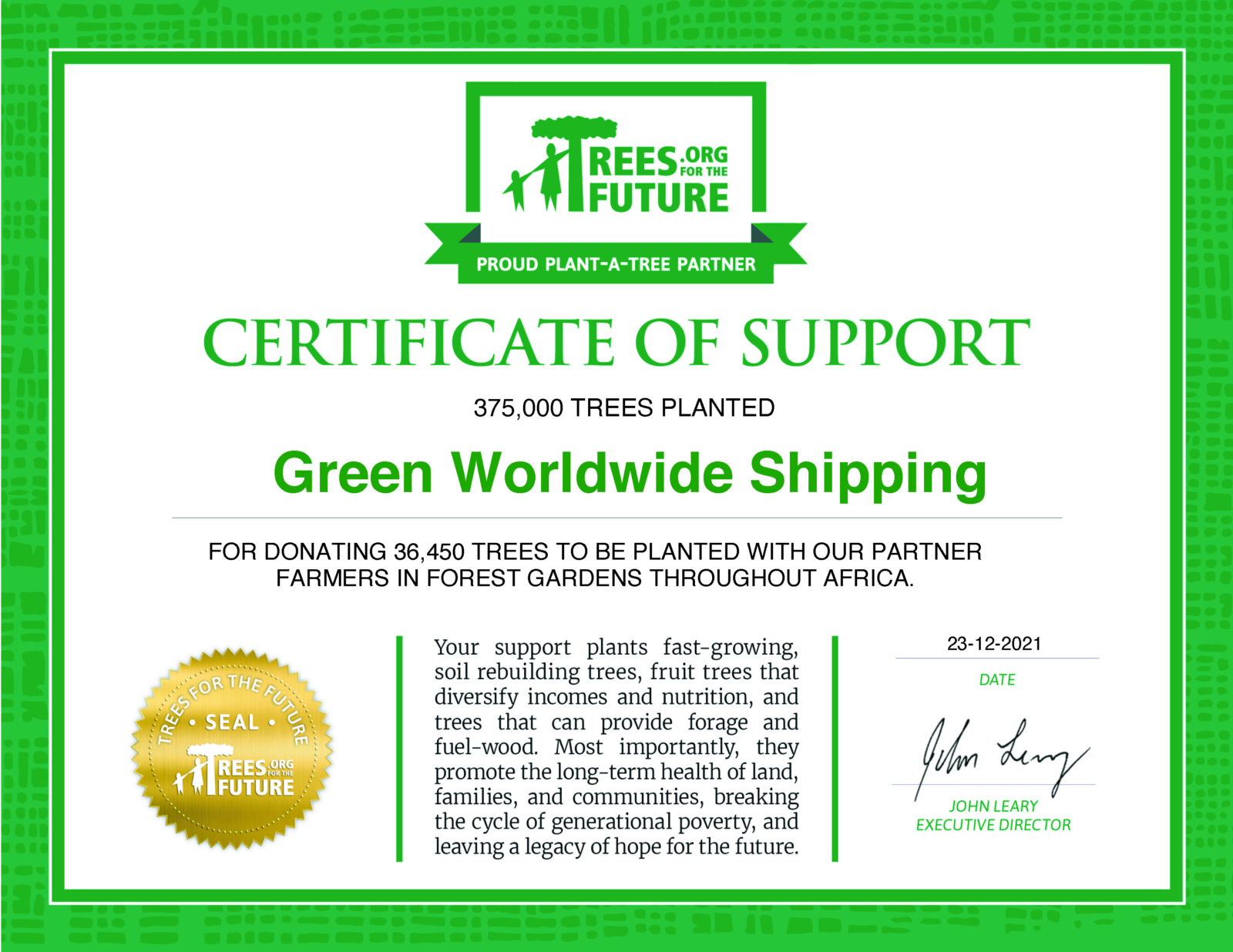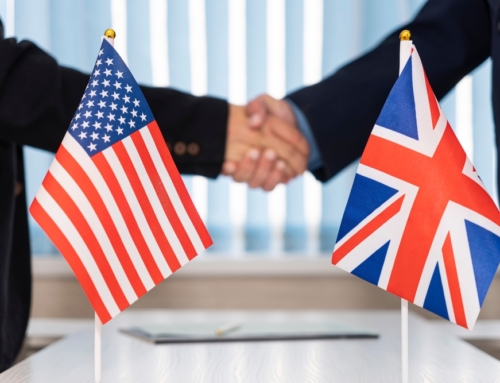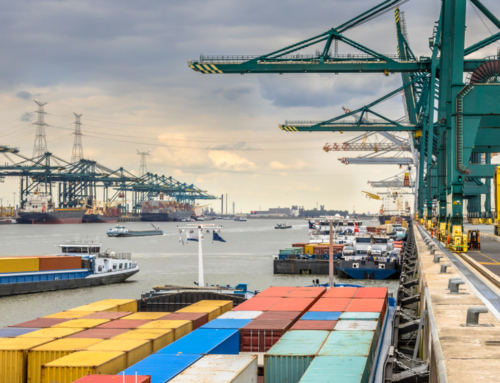Green Worldwide Shipping®, a leading U.S.-based provider of international freight forwarding and supply chain solutions, is proud to reach a milestone in the Green Tree Initiative; since the start of the program in April of 2019 through 2021, Green has donated a total of 375,000 trees for every customer, every shipment every time.
“As Green Worldwide Shipping continues to grow, we hope to keep increasing our commitment to programs that promote sustainability, not just for Green, but for all the supply chains we handle,” says Thomas Jorgensen, President & CEO, Green Worldwide Shipping. “Our customers and international partners appreciate the mindset that we are all making efforts to becoming better corporate citizens to each other and the world.”
Green partners with Trees for the Future in an effort to automatically mitigate some environmental impact caused by supply chain carbon emissions. As a member of the UN Global Compact, the world’s largest sustainability program, the Green Tree Initiative also contributes to our greater UNGC Sustainable Development Goals.
TREES FOR THE FUTURE
Trees for the Future (TREES) is an international development 501(c)(3) non-profit organization that meets a triple bottom line by planting trees for poverty alleviation, hunger eradication, and healing the environment. Through their Forest Garden Approach, Trees for the Future trains farmers to plant and manage Forest Gardens that sustainably feed families, raise incomes by 400 percent, and end deforestation. Since 1989, TREES has planted over 150 million trees. For more information, visit https://trees.org
CHECK OUT THESE FREQUENTLY ASKED QUESTIONS
Carbon sequestration is a natural process in which organic matter (trees, plants, soil) takes in carbon dioxide and stores the carbon. Trees and healthy soil organic matter are excellent ways of storing carbon over many years, and our approach supports long-term carbon sequestration.
On average, a Forest Garden offsets 144.64 metric tons of carbon dioxide per acre of land over 20 years.
Right now, Trees for the Future has projects in Kenya, Senegal, Tanzania, and Uganda. We also work in Cameroon, Gambia, Mali, and The Central African Republic through partnerships.
A Forest Garden is a combination of trees, shrubs, fruits, vegetables, and grains, strategically planted to support one another, the land, and farmers. Forest Gardens are an example of agroforestry, which incorporates trees to protect and improve the soil.
As opposed to the common approach to agriculture known as monocropping (planting and harvesting one crop), Forest Gardens are home to a diverse array of species, including food crops and medicinal crops which allows a farming family to improve their nutrition and stabilize their income. Lastly, Forest Gardens optimize space used in an area and spread harvest across time so that farmers can get the most out of their land and the growing seasons.
Trees for the Future’s expertise is in agroforestry, but the program is about more than planting trees. Through the Forest Garden Approach, Trees for the Future is able to achieve many important humanitarian and environmental goals. Farming families in the program are able to improve nutrition, income, and education. The program also improves water access and helps to connect communities to market opportunities. The trees planted through this approach are helping the environment, and helping to mitigate the current climate challenges farmers are facing.
Agroforestry has a very important place in international development work, so Trees for the Future partners with other organizations to ensure that they’re getting the most out of the solution. Trees for the Future works with organizations dedicated to water access, education, hunger alleviation and more.
Agroforestry means integrating trees into farming practices. Agro (agriculture) + Forestry (forests/trees) = Agroforestry. An orchard of, say apple trees is not considered agroforestry. In agroforestry, trees and other crops are planted close to one another so that the crops can benefit from the tree, whether through shade, protection from the wind, or the increased moisture in the ground and air.
Permaculture should be the ultimate goal of every farmer. Permaculture is a system of agriculture that allows the land and farmer to produce food and resources year round and often incorporates perennial crops (plants that come back year after year). Permaculture also relies on the natural processes of the land, allowing the farm or garden to care for itself to some degree. Perma (permanent) + Culture (agriculture) = Permaculture
Regenerative agriculture focuses on the health of the land and soil. Regenerative agriculture is becoming increasingly popular because our planet’s soil is disappearing at an alarming rate. Through regenerative practices, rebuilding soil leads to the return of natural flora and fauna.
Trees are magnificent organisms that can help combat the negative effects of climate change. Trees provide oxygen, habitats, food, fuelwood, animal fodder, and much more. Forest Gardens take advantage of all of those benefits to sustainably revitalize degraded land and improve the lives of farming families. Through the Forest Garden Approach, Trees for the Future has proven that the integration of trees into agriculture and landscapes can help farmers transform their degraded soils into fertile land, increase water penetration into underground aquifers, prevent wind and soil erosion, and trap moisture and nutrients in the soils so that crops can thrive.
Trees have everything to do with hunger and poverty, because when trees disappear from a landscape, so does moisture and soil, farmable land vanishes, opportunity disappears, and farming families are left with nothing. There is a direct link between poverty and deforestation throughout the developing world. Planting trees can effectively end hunger and poverty by improving land quality and productivity, so farmers have a sustainable source of food and income.
Trees for the Future has variety of trees and produce growing in Forest Gardens depending on the location and the farmer’s needs.
You can find a comprehensive list here.
Discover more about Green Worldwide Shipping’s commitment to sustainability, visit https://www.greenworldwide.com/sustainability/.






